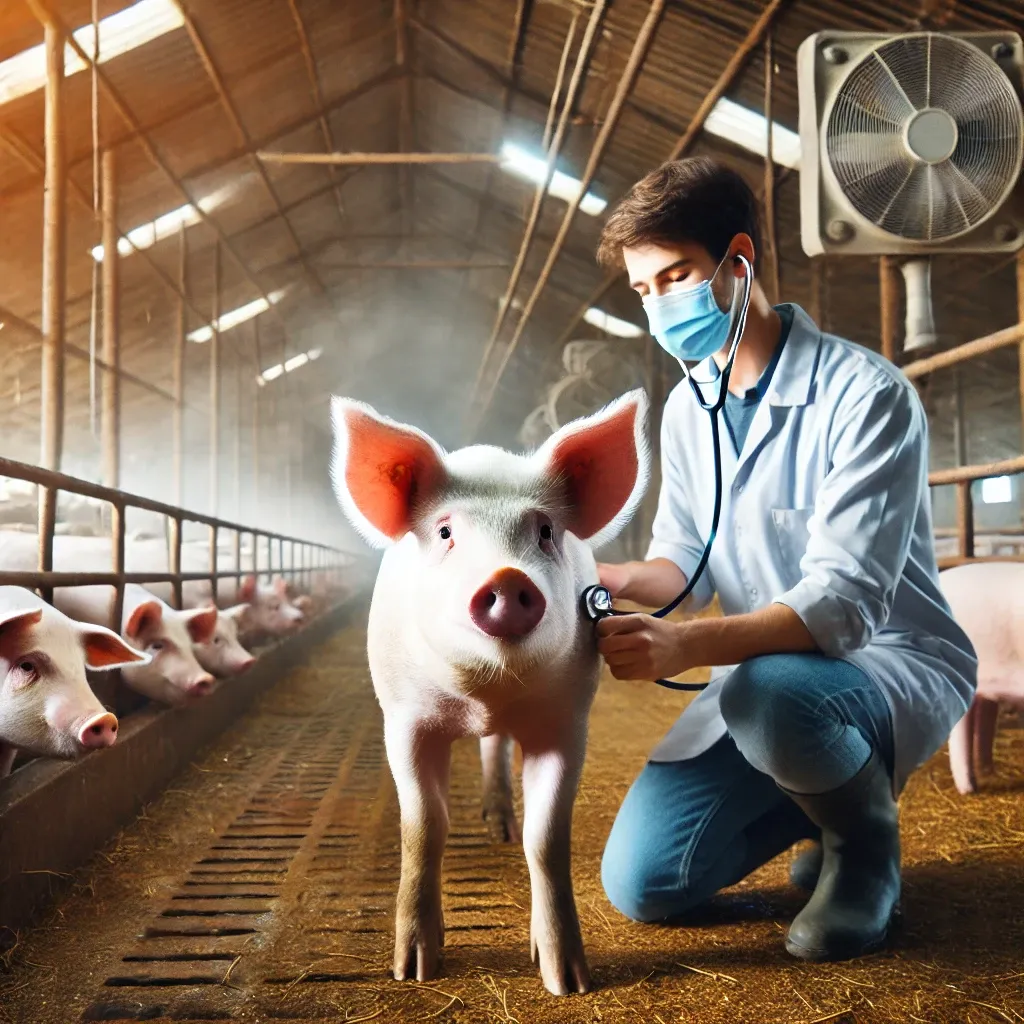Did you know that pigs are particularly susceptible to respiratory diseases during certain seasons? In this article, we’ll explore the types of respiratory diseases affecting pigs, how to treat them, and the importance of ventilation in preventing these issues. Why is proper ventilation so crucial for pig health? Read on to learn more.
Introduction
Respiratory diseases in pigs are a significant concern in the farming industry, particularly during the seasonal transitions when changes in temperature, humidity, and ventilation can exacerbate conditions. One of the most critical factors influencing pig health is “Pig season breathing temperament disease.” This term encompasses a range of respiratory conditions that pigs face, often triggered by seasonal changes. Understanding these diseases and how to treat them is essential for maintaining the well-being of pigs and ensuring the health of the entire herd.
In this article, we’ll examine the various types of respiratory diseases in pigs, discuss effective treatments, explore the role of ventilation, and explain how seasonal changes impact pig health.
Types of Respiratory Diseases in Pigs
1. Swine Influenza (H1N1)
Swine influenza, commonly known as “swine flu,” is one of the most widespread respiratory diseases in pigs. It is highly contagious and spreads quickly, especially in crowded or poorly ventilated conditions. Symptoms include coughing, nasal discharge, fever, and difficulty breathing. Although the disease can be mild in some pigs, it can cause severe illness and even death in others.
Prevention and Control Vaccination is the primary preventive measure against swine influenza. Additionally, maintaining good hygiene practices, reducing stress, and ensuring proper ventilation are critical in preventing the spread of the disease.
2. Actinobacillus Pleuropneumonia (APP)
Actinobacillus pleuropneumonia is a severe bacterial infection that affects the lungs and pleura (lining around the lungs). This disease often results in rapid death if not treated promptly. Symptoms include high fever, difficulty breathing, and sudden, severe coughing. APP is typically found in pigs younger than 6 months old and can spread quickly in overcrowded conditions.
Treatment Antibiotics are used to treat APP, but the disease can often be fatal without prompt intervention. Early diagnosis and antibiotic treatment are essential.
3. Mycoplasmal Pneumonia
Mycoplasma hyopneumonia is a bacterial infection that leads to chronic pneumonia in pigs. This disease is characterized by a persistent cough, poor growth, and labored breathing. It is commonly found in pigs housed in large commercial operations with poor ventilation.
Prevention The best way to manage mycoplasmal pneumonia is through vaccination and ensuring pigs are housed in well-ventilated areas.
4. Porcine Respiratory and Reproductive Syndrome (PRRS)
PRRS is a viral disease that not only affects the respiratory system but also the reproductive health of pigs. It can cause pneumonia, fever, and difficulty breathing, and is often associated with reproductive failures such as miscarriages and stillbirths.
Management Preventing PRRS is challenging, but strict biosecurity measures, vaccination, and culling infected animals can help reduce its spread.
5. Pneumonia due to Environmental Stress
Environmental factors, such as poor ventilation, overcrowding, and extreme temperature fluctuations, can lead to secondary pneumonia in pigs. This is commonly seen during the winter or transitional seasons, when pigs are exposed to cold and damp conditions, weakening their immune systems and making them more susceptible to respiratory infections.
Prevention Maintaining stable temperatures and ensuring proper ventilation in pig barns are crucial to preventing pneumonia caused by environmental stress.
👉 Learn more about Pig Respiratory Diseases 👈
Understanding the Impact of Seasonal Changes on Respiratory Diseases
Seasonal transitions are particularly challenging for pig health. During winter and fall, cold temperatures can compromise ventilation systems, leading to the accumulation of harmful gases like ammonia and carbon dioxide in the barn. These gases irritate the respiratory system, making pigs more susceptible to diseases like pneumonia and influenza. Similarly, in the warmer months, high humidity and heat stress can exacerbate respiratory problems.
The seasonal rise in respiratory disease cases highlights the importance of managing the barn environment to protect pig health. Factors such as temperature control, humidity regulation, and maintaining proper airflow are essential to minimize the risk of respiratory diseases.
Respiratory Disease Treatment in Pigs
1. Antibiotics and Antiviral Medications
For bacterial infections like Actinobacillus pleuropneumonia and Mycoplasmal pneumonia, antibiotics are often the first line of treatment. The choice of antibiotic depends on the severity of the infection and the specific bacteria involved. For viral infections such as PRRS and swine influenza, antiviral treatments may be used, although their effectiveness can vary.
2. Supportive Care
In addition to specific treatments, supportive care is critical for pigs suffering from respiratory illnesses. Providing clean, dry bedding, reducing stress, and ensuring adequate nutrition are essential to helping pigs recover. In severe cases, supplemental oxygen may be needed to assist breathing.
3. Vaccination Programs
Vaccination is one of the most effective methods for preventing respiratory diseases in pigs. Vaccines for diseases like swine influenza and Mycoplasma hyopneumonia can significantly reduce the incidence and severity of infections. Regular vaccination schedules should be part of any comprehensive pig health management program.
4. Environmental Management
As mentioned earlier, maintaining optimal barn conditions is essential for preventing respiratory disease outbreaks. This includes regulating temperature, ensuring adequate ventilation, and controlling humidity levels. A well-maintained ventilation system helps remove harmful gases and reduces the buildup of moisture, which can create the perfect environment for disease-causing pathogens.
👉 Learn more about Respiratory Disease Treatment 👈
Seasonal Respiratory Disease in Pigs
1. Challenges in Winter
During winter, cold temperatures combined with high humidity can lead to respiratory distress in pigs. These conditions cause the airways to constrict and make it harder for pigs to breathe properly. Additionally, poor ventilation during winter can lead to the buildup of harmful gases, further complicating the situation.
2. Transition Between Seasons
The transition between cold and warm seasons is another critical period for pig respiratory health. The sudden shift in temperature and humidity can shock the respiratory system, leading to increased susceptibility to infections. Ensuring proper ventilation and monitoring the environment during these transitions is essential for minimizing risk.
3. Early Detection and Prevention
The key to managing seasonal respiratory diseases is early detection and proactive management. Regular health checks, vaccination, and environmental control can significantly reduce the impact of seasonal respiratory issues.
👉 Learn more about Seasonal Respiratory Disease 👈
Conclusion
In conclusion, pig respiratory diseases, particularly those exacerbated by seasonal changes, pose significant challenges to pig health. Understanding the types of respiratory diseases, knowing how to treat them, and ensuring proper ventilation can go a long way in protecting the pigs. Effective management practices, including vaccination, environmental control, and early detection, are critical to reducing the incidence of respiratory diseases in pigs. By focusing on these key factors, farmers can help maintain the health and productivity of their herds throughout the year.






